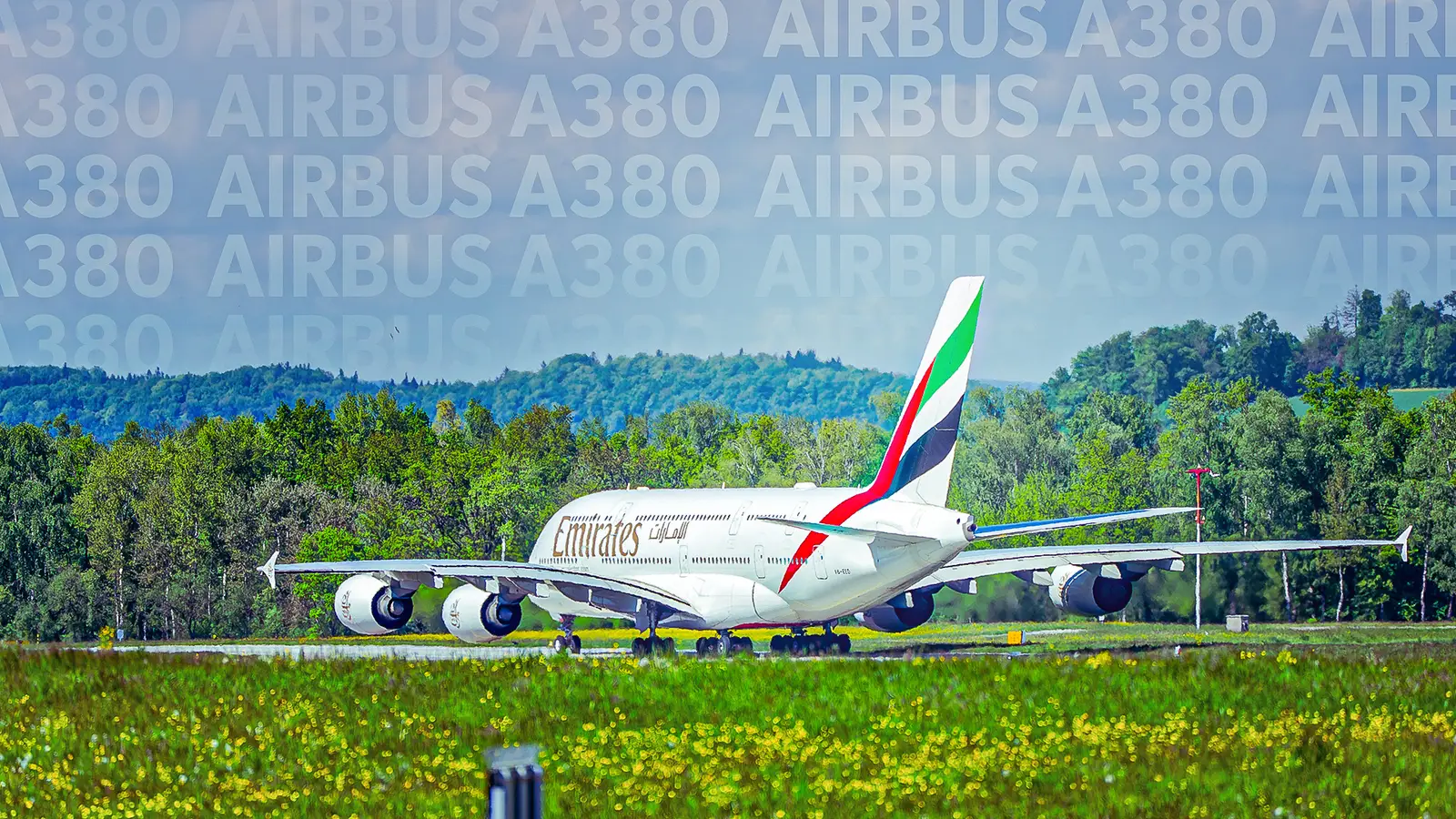
Since its introduction in 2007, the Airbus A380 has been the undisputed leader of high-capacity, long-haul air travel. From its unique appearance to its impressive onboard facilities, the double-decker aircraft has been a real hit with passengers around the world. However, is the so-called Superjumbo about to lose its crown?
In this article, we will take a closer look at the aircraft that is set to replace the Airbus A380 when it comes to long-haul, widebody air travel – the Boeing 777X. We will also discover which airlines have placed orders for the upcoming aircraft and why its entry into commercial service is already so far behind schedule.
A Brief History Of The Airbus A380
Airbus sent shockwaves around the aviation world back in the early 2000s when it launched the A380 – not since the Boeing 747 had the industry seen such a game-changing aircraft. Singapore Airlines became the launch customer for the Superjumbo in 2007 with a flight from its hub at Singapore Changi Airport (SIN) to Sydney Airport (SYD). Since then, the aircraft has continued to attract attention wherever it flies, and will likely go down in history as one of the aircraft that changed the face of aviation.
The downturn in international air travel following the COVID-19 pandemic sparked the beginning of the end for the Airbus A380, with many airlines choosing to retire their fleets earlier than planned. However, carriers such as Emirates have used their A380s to take advantage of the post-pandemic travel boom, giving the aircraft a second lease of life and even retrofitting them with its latest premium economy cabin.
By the time production ended, Airbus had built and delivered more than 250 A380s. Today, Emirates is by far the world’s largest operator of the A380, with a staggering 116 in its fleet, as per the latest data from ch-aviation. Other major operators include Singapore Airlines, British Airways, Qantas, and Etihad Airways.
Introducing The Boeing 777X
The Boeing 777X is designed to compete with the Airbus A350, but with its high capacity of over 400 passengers, the aircraft is also seen as a direct replacement for the mighty Airbus A380.
The 777X incorporates the latest aircraft technology of the 787 with the reliability, high capacity, and long range of the existing 777 series, making for a formidable aircraft, which is already generating excitement among airlines and industry professionals around the world.
Boeing is building two passenger variants of its 777X aircraft – the 777-8 and the larger (and infinitely more popular) 777-9. The latter is set to be the first of the two variants to enter commercial service in 2026, followed by the 777-8 in 2027.
The World’s Most Powerful Commercial Aircraft Engine
The Boeing 777X will be powered by two General Electric GE9X engines, which are the world’s largest and most powerful commercial aircraft engines. Building on the legacy of its predecessor, the GE90, the GE9X incorporates cutting-edge technologies to improve efficiency, reduce emissions, and lower operating costs for airlines. It delivers more than 100,000 lb of thrust, making it the highest-thrust engine ever built for a commercial aircraft.
A key innovation of the General Electric GE9X engine is its use of advanced materials, including ceramic matrix composites, which can withstand higher temperatures while being significantly lighter than traditional metal alloys. The engine also features composite fan blades and a 132-inch diameter fan, the largest ever used in commercial aviation. These innovations contribute to the Boeing 777X offering a 10% improvement in fuel efficiency compared to competing aircraft such as the Airbus A350, and as airlines look to reduce operating costs and face higher fuel prices, such an improvement makes the 777X an extremely attractive proposition.
The General Electric GE9X has also been designed with environmental goals in mind, achieving lower emissions and reduced noise output in line with stringent international emissions standards, and helping airlines meet sustainability targets. After an extensive development and testing program, including over 5,000 hours of testing, the GE9X received certification from the US Federal Aviation Administration (FAA) in 2020. The engine represents a major milestone in aircraft technology and is key to the performance and appeal of the Boeing 777X.
The Boeing 777X’s Unique Folding Wingtips
Aside from its large General Electric GE9X engines, one of the most striking features of the Boeing 777X is its folding wingtips, which are a first for a commercial aircraft. With its wings extended, the aircraft has a wingspan of over 235 ft, enhancing its aerodynamic performance during flight. However, the folding mechanism allows the aircraft to reduce its wingspan while on the ground, ensuring it can operate at airports without the need for structural modifications.
This is in contrast to the Airbus A380, which, when it was introduced in 2007, required several airports to modify their infrastructures to be able to accommodate the huge double-decker aircraft – this included larger boarding gates and additional jetbridges. For airports that see a significant number of A380 services, such as London Heathrow Airport (LHR), Los Angeles International Airport (LAX), and Singapore Changi Airport (SIN), this was no mean feat.
When it comes to the Boeing 777X’s wings themselves, they are made from carbon-fiber composites, marking another significant development in aircraft technology. Such composite materials offer a superior strength-to-weight ratio compared to traditional aluminum.
Airlines That Have Ordered The Boeing 777X
The largest operator of the Boeing 777X is set to be Emirates, which is perhaps unsurprising, given that the carrier is already the world’s largest operator of both the Boeing 777-300ER and the Airbus A380. Emirates, based at Dubai International Airport (DXB), operates a variety of cabin configurations onboard its high-capacity aircraft, with the airline’s A380s accommodating around 400-600 passengers.
This makes the Boeing 777-9, with its capacity of more than 400 passengers, the ideal replacement for the A380 in Emirates’ fleet. The airlines that are expected to take delivery of the largest Boeing 777X orders are outlined in the table below:
Korean Air has been a major customer of Boeing aircraft for many years, and already operates several of the US manufacturer’s aircraft to and from its primary hub at Seoul Incheon International Airport (ICN), including the 737 MAX 8, 747-8, 777-300ER, 787-9, and 787-10. After sparking interest at the 2024 Farnborough Airshow, the South Korean flag carrier confirmed its sizable order earlier this year. At the time, the carrier’s CEO, Walter Cho, celebrated the news, saying,
“For over 50 years, Korean Air and Boeing have built a relationship based on trust and mutual growth. Today, we further strengthen our historic relationship with this landmark order. We look forward to continuing our journey with Boeing as our trusted partner in innovation and excellence.”
Delays & Setbacks To The Boeing 777X Program
The Boeing 777X was originally expected to enter commercial service around 2020, but its first delivery has since been repeatedly pushed back. In April 2022, Boeing confirmed that deliveries would instead begin in 2025, citing certification timelines and regulatory requirements.
However, the Boeing 777X went on to experience several more setbacks, pushing the first delivery date back further. One of the major technical issues causing delay came in August 2024, when routine inspections revealed cracks in the thrust links, which are the components that connect the engine to the wing. These thrust link failures led to a grounding of the test fleet, halting further flight testing until replacements or redesigns could be implemented.
Beyond technical failures, certification has become a much longer, more demanding process, and regulatory scrutiny has been heightened significantly following Boeing’s past safety incidents (particularly with the US manufacturer’s 737 MAX and 787 aircraft). These have added extra layers of checks, delays, and validation requirements. Labor issues have also played a role, with strikes among Boeing staff further disrupting the production and testing schedules and compounding the existing delays.



